Three “different” versions of the “Le Cab” were made in the period between 1889 and 1919.
These vehicles were the means of transport in the city in the late 1800s and early 1900s, they were actually the first taxis
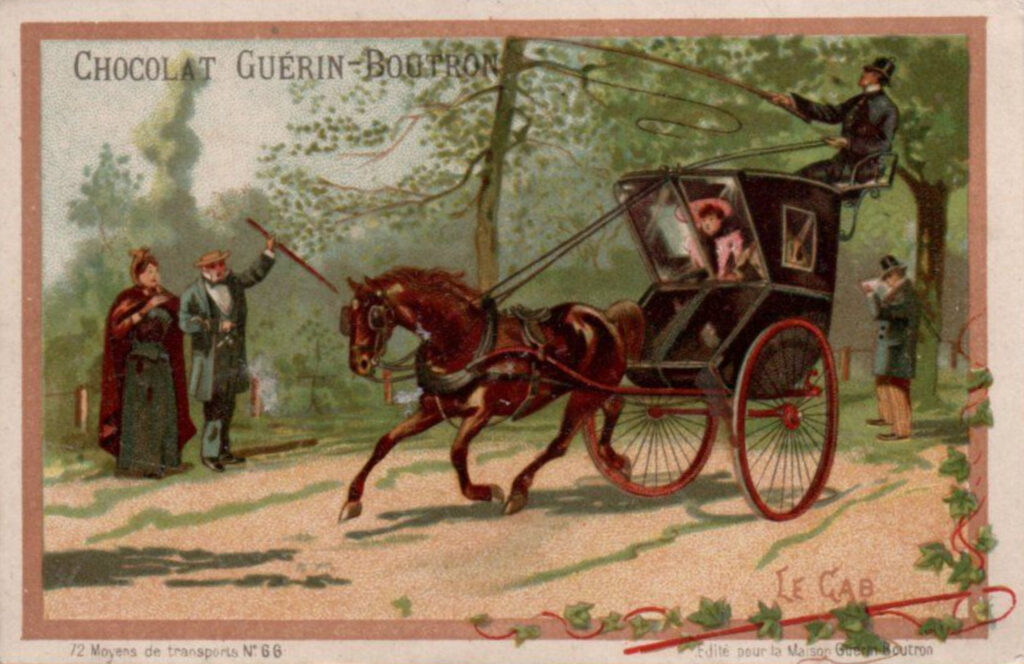
THE FIRST VERSION OF THE LE CAB FROM 1889 with number 110:
Fernand Martin launched his first version of the Le Cab in 1889, the differences with the later version from 1903 and 1912 can be recognized by the following points.
The 1889 version compared to the 1903 and 1912 models:
-The carriage had no passenger section. (it’s closed on the front)
-The wheels have 8 spokes, (the 1903 and 1912 versions have 10 spokes)
-Closed-side windows. (Only painted windows in red)
-Driven by a flywheel mechanism.
-This edition has 35 metal separate parts, (that is what you can count on the drawing), to build and complete the hole toy.
That did not include the rein so actually 36 parts in total.
This first version of the Le Cab is very very rare and hard to find, so far I only know a few copies :
–1 in the collection of the Parisian museum: Musée des arts et Métiers this one was part of the gift from Fernand Martin to the museum in 1908, that one has a brown horse.
–1 sold a few years ago at the French dealer l’Orangerie – François Binetruy, this one also came with an original box and a brown horse.
–1 in the Spielmuseum Soltau in Germany with a white horse.
–1 in the collection of a friend of mine with a white horse.
–1 in my own collection with a white horse.
But there will probably still be some other copies in museums or collections over the world.
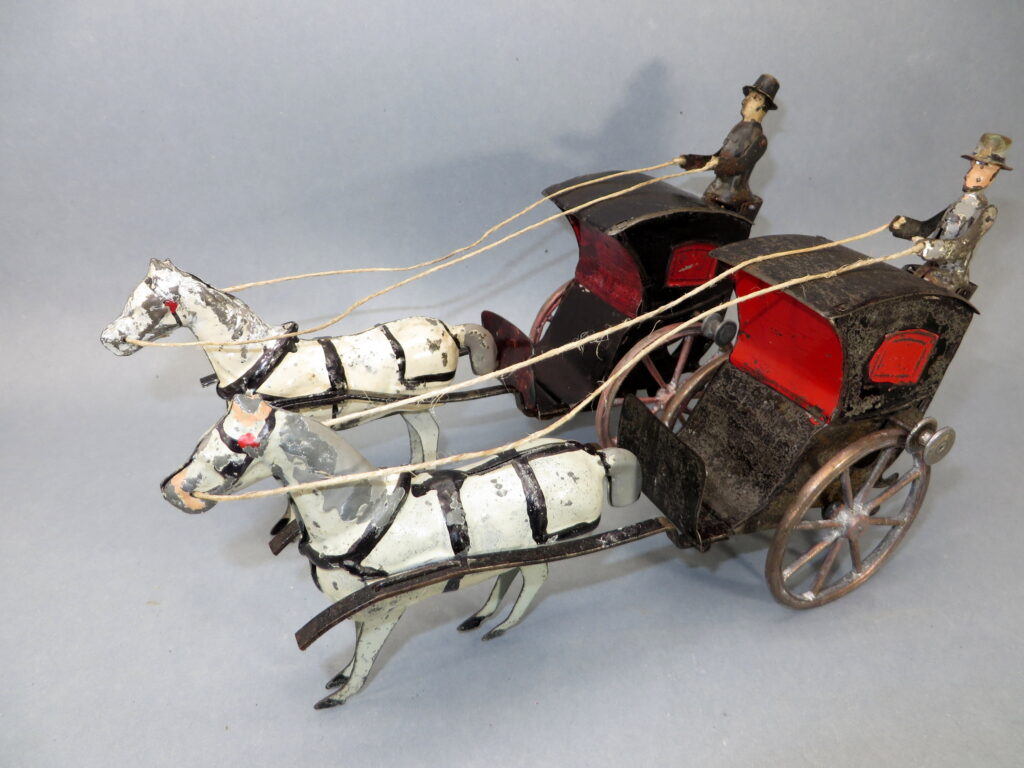
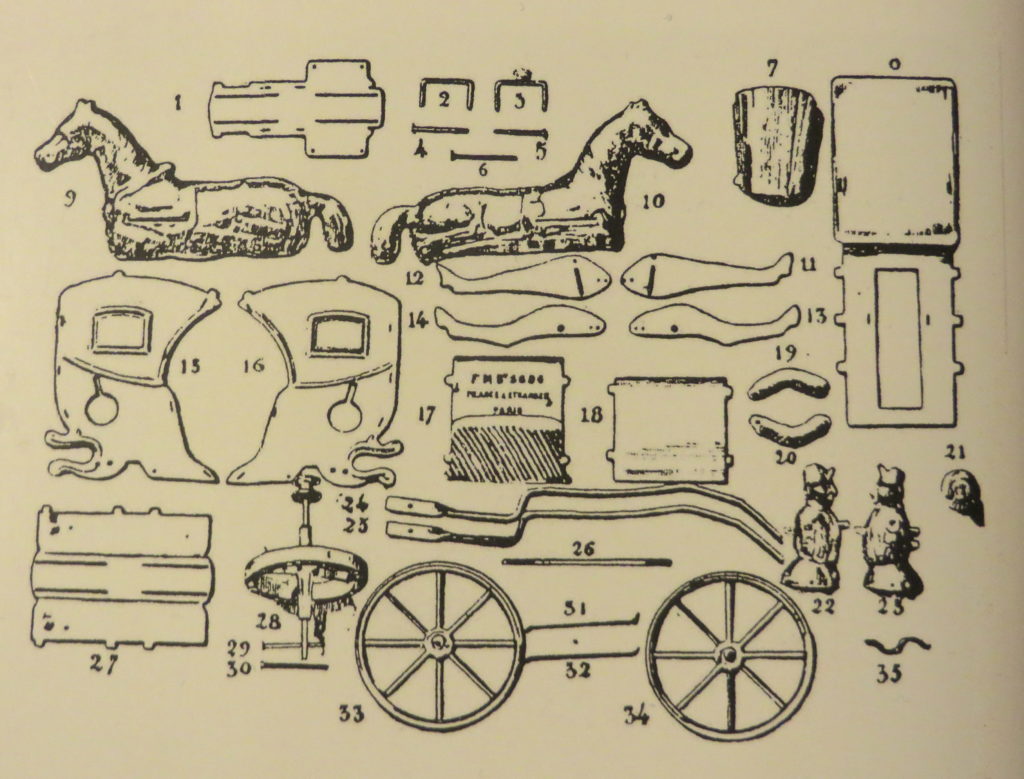
Below you see an original box label and an image from the original catalog.
If you look very closely you will see differences between the box label and the catalog image.
1- The four corners of the box label are not richly decorated.
2- Below the triangle with number 138 are on the box label data of various gold medals that Martin has won.
3- the “instructions” are different in width and the number of lines is different, on the box label the lines are wider then on the catalog image.
4- Below the legs of the horse the text “Made In France” appears on the catalog image and not on the box label.
5- On the right and left of the FM logo are small decorations on the box label.
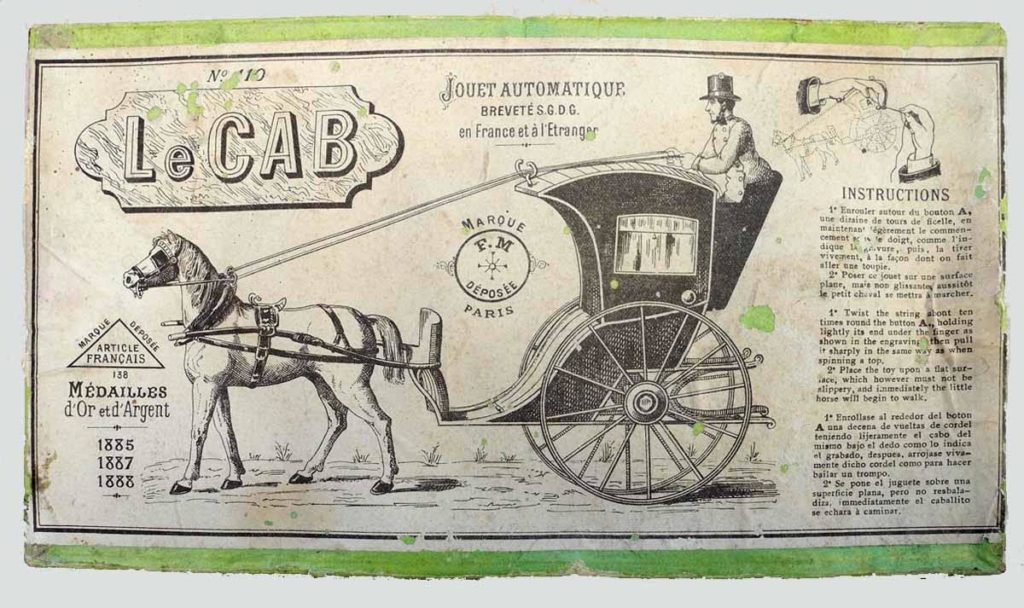
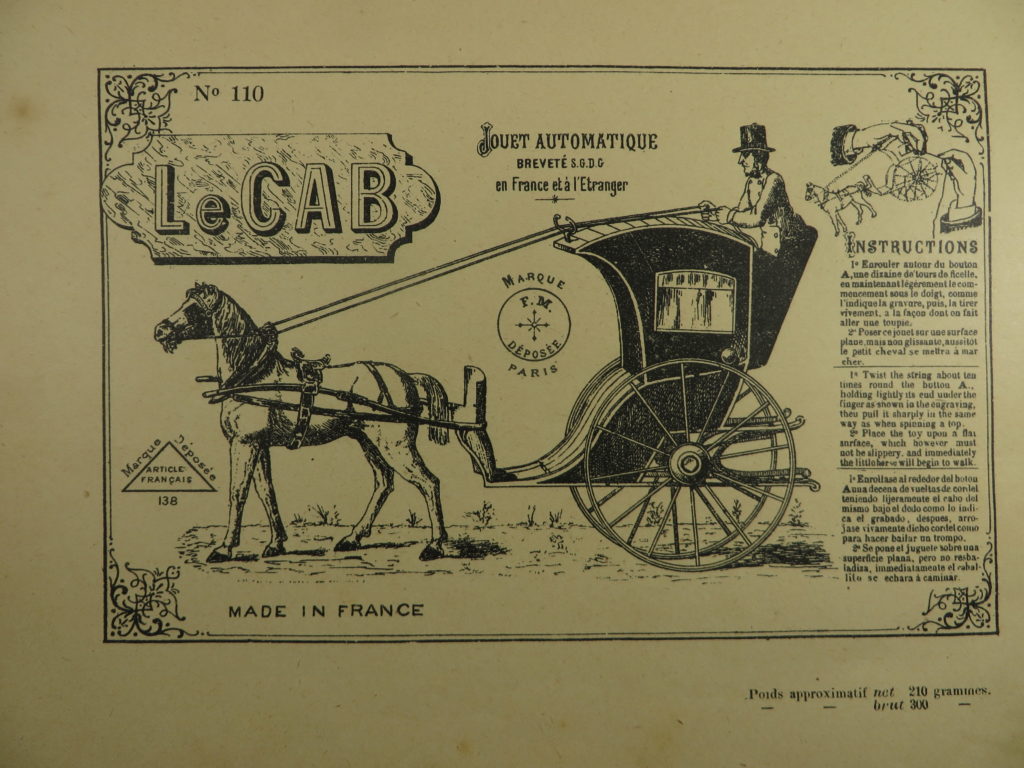
As already mentioned there is one known copy complete with box, so very rare and that one has a brown horse.
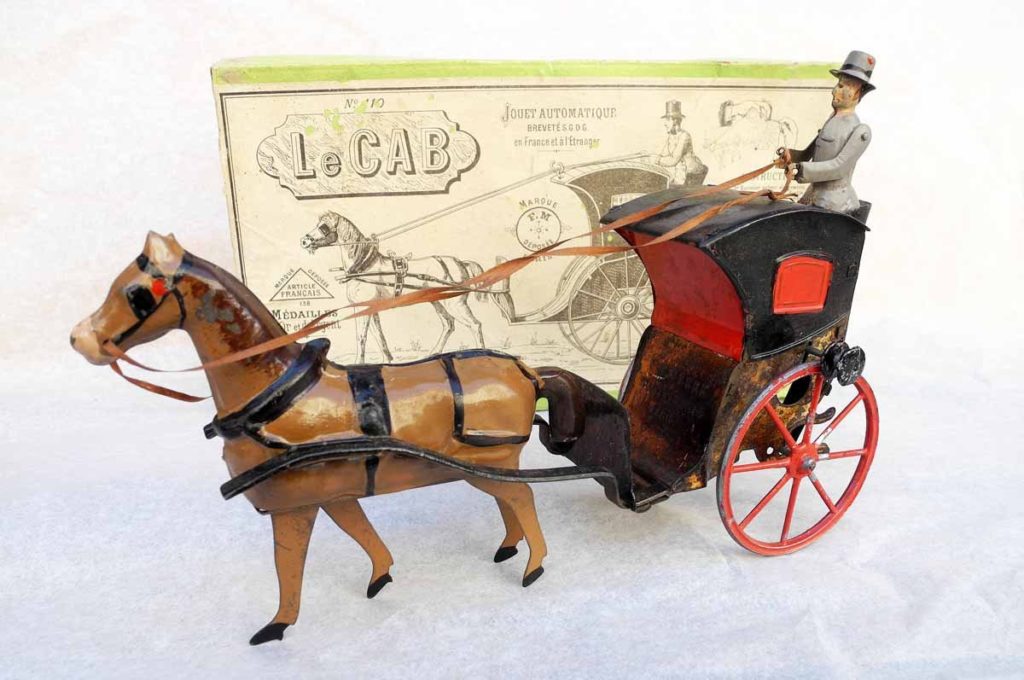
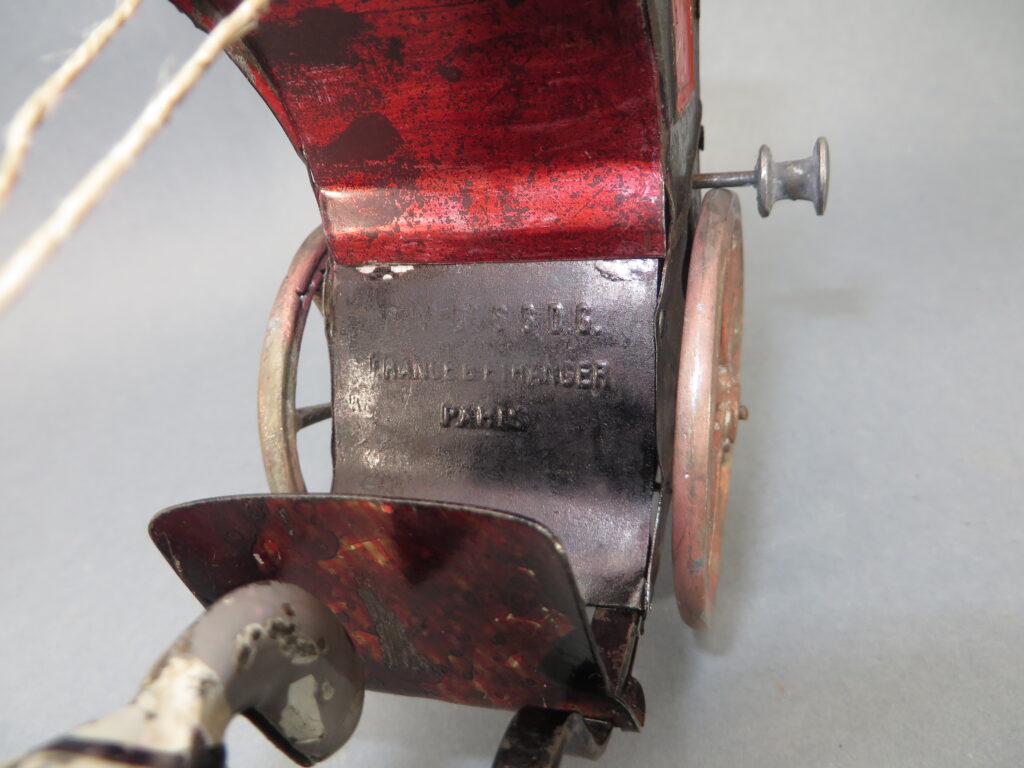
On the inside of the passenger seat there is the imprint of the Fernand Martin factory
SECOND VERSION WITH THE NUMBER 192 FROM 1903 :
In 1903 Martin released this same toy again in a slightly modified version, now with a passenger section and also open side windows, a clockwork drive and a complete new box label.
It got number 192.
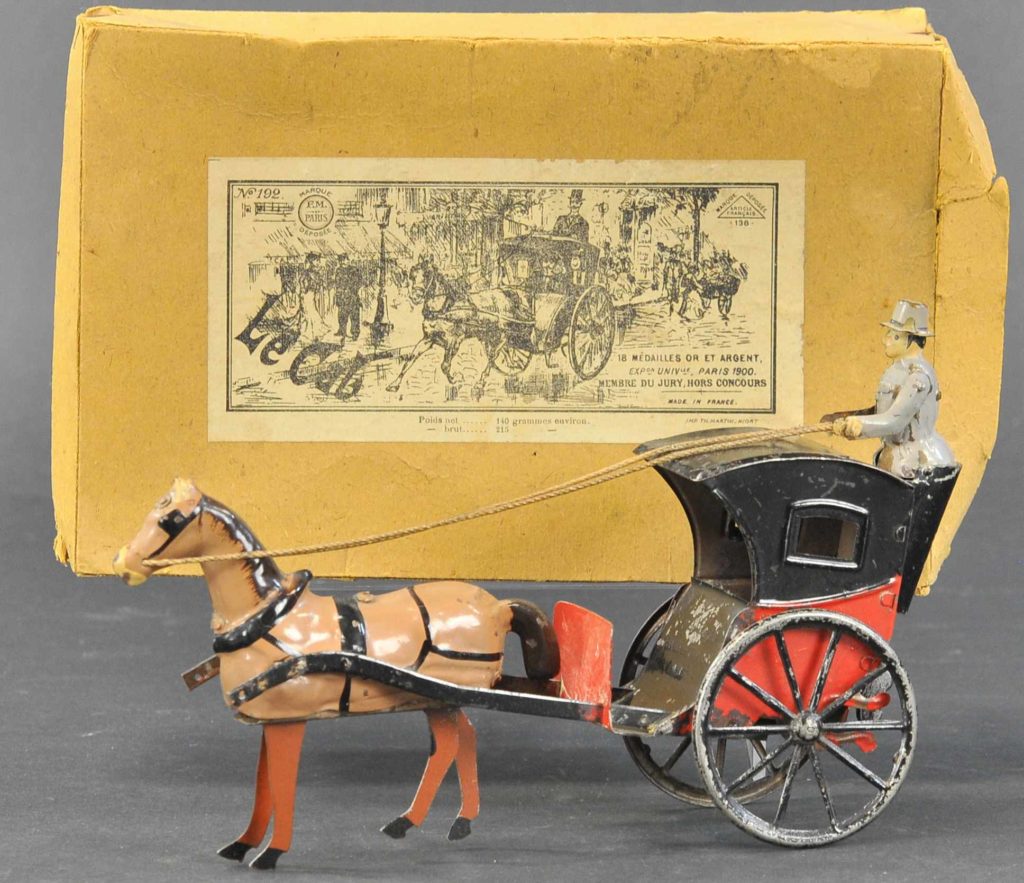
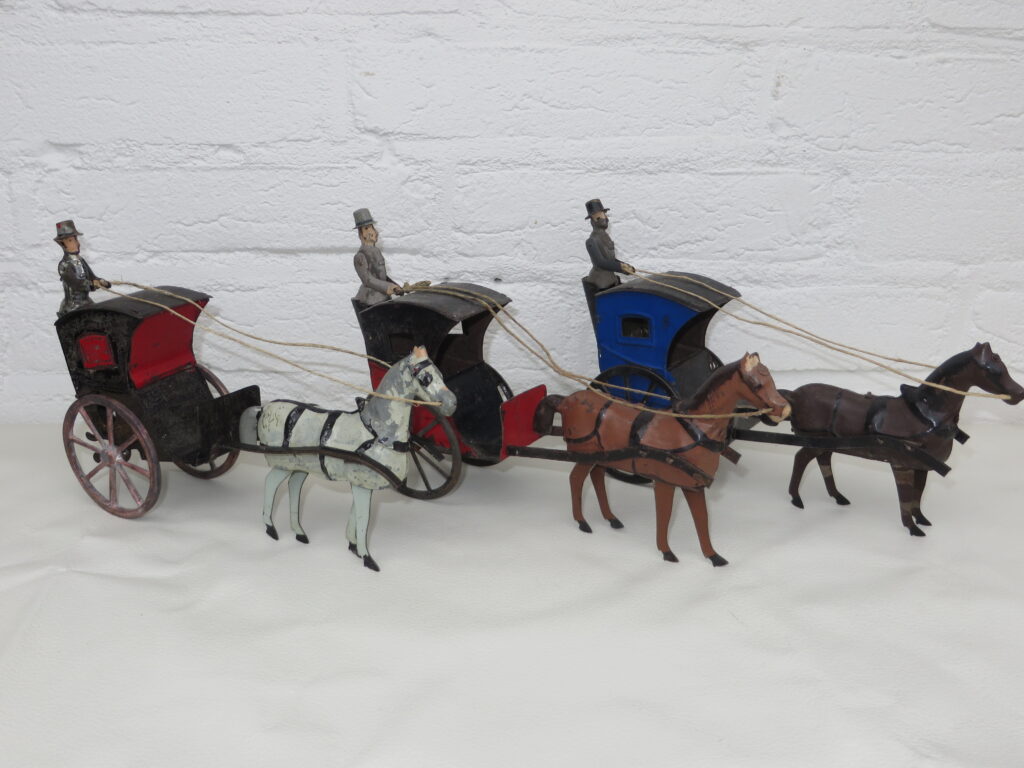
The coach of this 1903 version came in the black / red color combination.
The drive was now a wind-up mechanism and with the recognizable Martin key.
This toy was marked on the inside of the passenger section and on the backsite above the key .
THE FLERSHEIM VERSION WITH THE NUMBER 192 FROM 1912
In the Flersheim period from 1912, the Le Cab was re-released, the version was almost the same as the Martin version from 1903 and the Martin number remained the same with 192.
This version is only marked on the roof with the well nown triangel marker. This version also had a wind-up mechanism but now with a Martin or Flersheim key.
It was sold in multiple colors.
I have come across this Flersheim version with the coach, so far, in the following colors
Lower part of the sides – Upper part of the sides – the top of the roof.
-Brown – brown – brown.
-Blue – black – black.
-Green – green – green.
-Blue – blue – black.
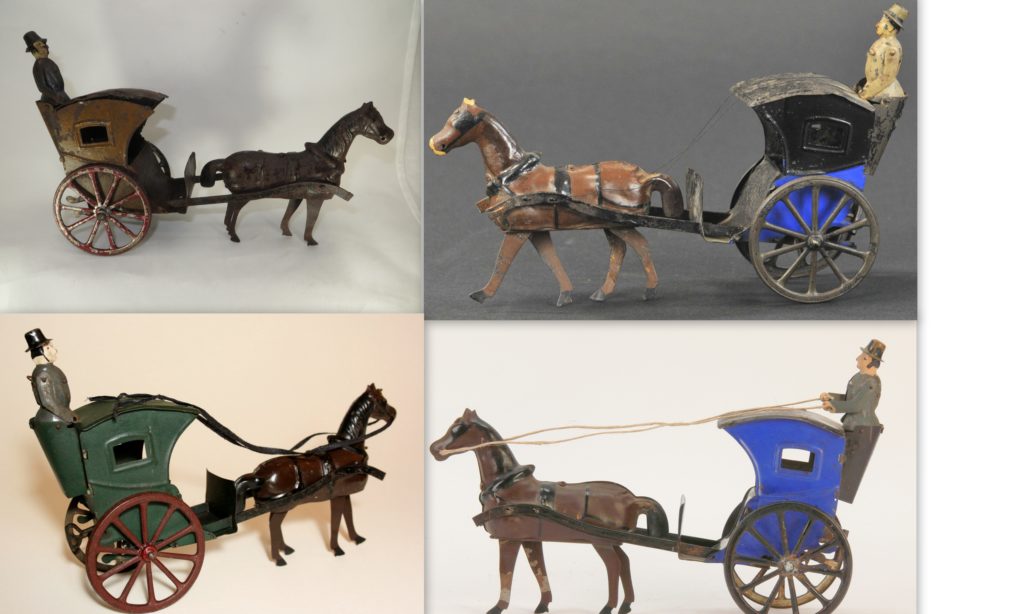
What is also striking in this version and recognizable as Flersheim is that with all Flersheim models I have seen, the fixing tabs for fixing the back, are facing backwards.
With the Martin version, these tabs are always facing inwards.
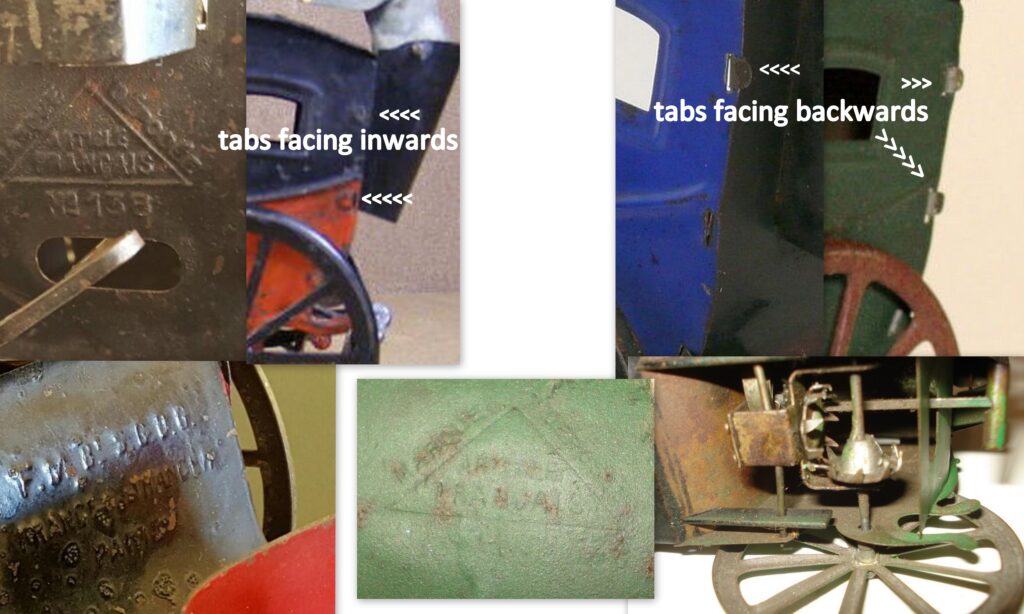
Yet another deviation is that for the toys of which the carriage is completely colored, (the green and light brown version) the colors appear to be “sprayed”, but that they were only sprayed after the carriage was already partially assembled.
If you look closely at the carriage, you will find color residues on the drive section, the rods to the horse, but only on the inside at the location of the wind-up mechanism, the key and also on the inside of the rear lower protruding ornament parts.
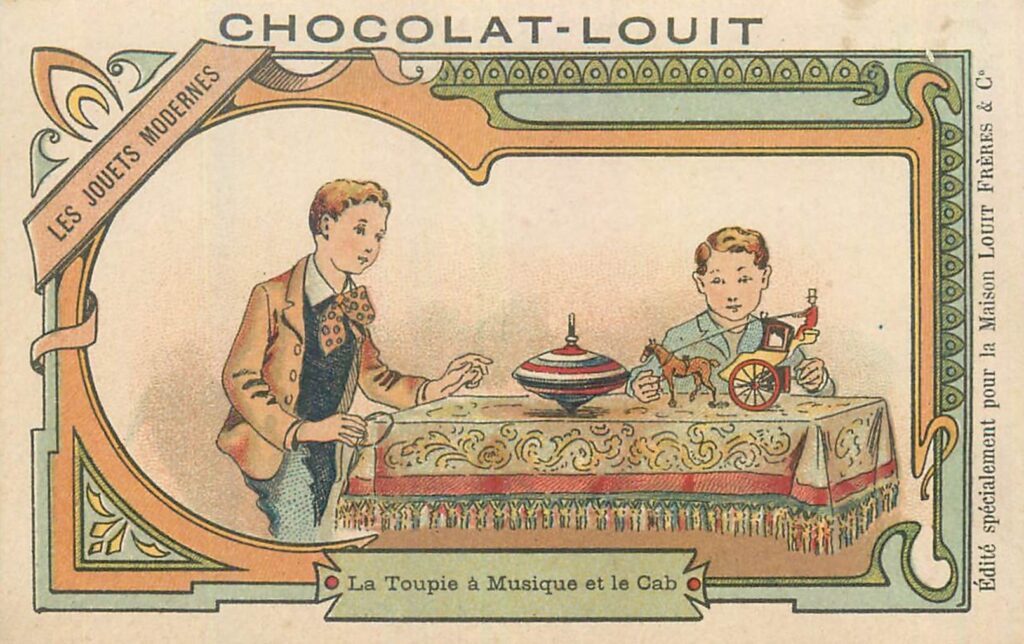
The same horse was used many years by Martin, Flersheim and Victor Bonnet for divers toys: from 1890 the Don Quichotte, the horse with a cover
number 110 Le Cab version with fly wheel made by Fernand Martin in 1889
number 122 Le Courrier Parisien made by Fernand Martin in 1892
number 192 Le Cab version with a wind-up mechanism made by Fernand Martin in 1903
number 192 Le Cab version with a wind-up mechanism made by George Flersheim in 1912
number 194 de La Voiture A Bitume made by Fernand Martin in 1906
number 203 de Le Laboureur made by Fernand Martin in 1906
number 255 La Charrette Paysanne made by Victor Bonnet in 1927
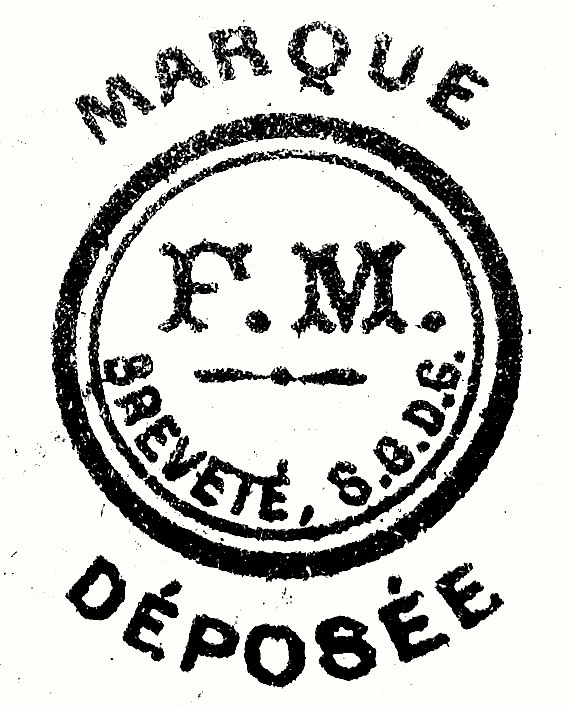
Thanks, see at “About me”